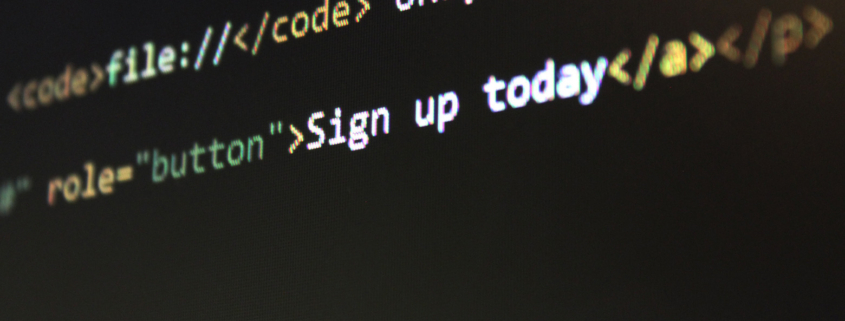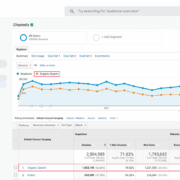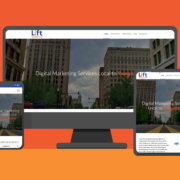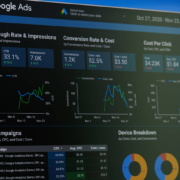Website Design vs. Web Development: Is There A Difference?
There’s no doubt that the internet has revolutionized how we do business and live our lives. Who isn’t on the internet at any given point in a day? Here’s the thing: there is a team that develops every single thing connected to the web.
There are two main players in the world of web: website design vs. web development. While these two disciplines are different, ultimately they work together, sometimes blending, to create a functional website. Search engine optimization (SEO) web design is making a website that leads to higher search engine rankings, which we’re guessing you probably want.
Think of it this way: Your website is the structure that was designed by web designers, or architects. Web development is the construction portion, with the people in charge (software engineers) like contractors.
What’s Website Design?
Website design involves creating a website’s layout and look. A solid example is Slack, a messaging platform for businesses (think instant messaging). Simple colors and images are fun to look at and the features are easy to use. A good designer will have a firm grasp of how to create pretty pages that work well on any device (desktop computers, laptops, tablets and smartphones).
A nice-looking site that’s easy to use will help you create content that will serve your business goals. Applying color theory (mixing color palettes together that look nice) and fonts to a website are some skills designers use to make all this happen. These are tied together with design principles, which include rhythm, contrast, proportion, balance, white space and pattern.
Website designers take into consideration how each page will look and how users will interact with it when text and buttons are added. Adobe Photoshop and Adobe Illustrator are design software examples heavily used by designers. Designers usually have knowledge of coding languages (HTML/CSS).
Note: a visual designer has the same skills as a website designer, but they also do print assets.
Crash-course in Web Development
Web development, on the other hand, is the process of building a website’s functionality. It’s done using code. It can get complex but we’re keeping it simple.
A web developer, or software engineer, has more coding experience than most designers do but they aren’t trained as much in aesthetics or typography (although they should still be able to make sure the web design looks good). Their main coding skills are making sure everything works properly by using programming languages (ways to communicate with computers).
If you want your website to include videos or interactive elements like quizzes, ‘contact us’ pages and shopping carts, there’s coding involved for those features to work.
Some common programming languages:
-
- HTML – A standard programming language for describing contents and appearances on web pages.
- CSS – This is the layout, color and font portion of developing.
- PHP – An open source programming language.
- JavaScript – Creates applications and browsers. This is the most popular programming language in the world. Everything stays organized with Java through jQuery, which is a type of library.
- SQL – Language that communicates with databases.
- Python – High-level programming language used in a bunch of places, from Facebook to Spotify to banks.
Now, there are content management systems like WordPress, a web designing tool, which lets you create and publish digital content. Then, Ruby on Rails is what you build software on. This is called a framework. Go back to the housing idea from the beginning of this blog. Think of a framework as a prefab foundation to a structure.
When you see buttons, links, fun stuff like animation, that was all created by a front-end developer. Handling data are back-end developers. Then, full-stack developers can do both front- and back-end development.
Web Design and Web Development Similarities
We’re taking it a step further, just to cover bases. You’re going to be a pro by the end of this blog.
Designers and programmers generally have similar and overlapping skill sets, so these roles can be filled by one person. It’ll depend on the individual. Both use wireframes, which are templates or mockups that show where text and designs need to go on web pages. A prototype, basically.
Then, there’s UI designers (user interface, handling the look, feel and interactivity online) and UX designers (user experience felt when a person uses a site or app). These people are largely grouped in the creative side, but use some aspects of development. Ultimately, both want the usability of a site maximized so the process of using a website or app is enjoyable.
Other Quick Terms to Glance Over
Just to keep some momentum going, we want to make sure you at least know some other industry words.
-
- There are application programming interfaces, or APIs. These allow two web applications to talk with each other (embedding a video player to your site, then taking data collected from Youtube).
- Server-side is anything that involves the server.
- Client-side is everything a user sees and uses.
A Brief History of the Web
Jan. 1, 1983 was a great day. In a way, it led you to us, and be honest. There’s no place you’d rather be, right? Thought so.
That’s the official birthday of the internet. That means that beforehand, the tens of computers out there didn’t communicate. Fast forward to Aug. 6, 1991, and we were given the first website. It’s called The World Wide Web Project.
The website looked cutting-edge 30-some years ago. Now… not so much, but think about how much technology has evolved even in the last year. There are no visual elements, color schemes or graphic design on that original website.
The fact there was a server that connected the entire globe was a thrilling component to the user experience. Since then, the internet has evolved. Web design trends are changing super fast. Flat design has become popular after skeuomorphism (think: Instagram logo looking like a camera) was all the rage only a few years ago.
In spite of these rapid changes in appearance and functionality, the web has remained largely unchanged over the years. Underlying technology used to build websites hasn’t changed much since its inception — HTML still serves as its foundation. Basically, no one needed to reinvent the wheel.
We’ll Pump Up Your Brand
Now you know the difference between website design vs. web development. If it seems like a lot, it is… but not for us. Contact us to build a user-friendly eCommerce website or rebrand your company today!












